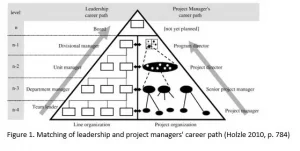Citing Tables, Maps, and Figures from other Sources in Harvard Style
Published by at August 27th, 2021 , Revised On August 23, 2023
1. Citing a table
In Harvard referencing, every table within a manuscript is numbered and is given a title. If a table has been retrieved from an online source and used as it is, modified, or compiled with other tables to create one table, the source(s) is still written as an in-text citation below the table.
Generally, tables are retrieved from sources like books, journal articles, online documents, reports, and the like.
Regardless of the source, the word ‘Source’ is written, followed by a colon and the title of the source. In case the table was retrieved from a book, for instance, the book’s author name will be mentioned in the in-text citation (below the table).
Following is the general format for citing tables, along with an example.
In-text citation: Source or Sources: Author Surname (Year, p.# or pp.#) OR
Source: Adapted from Author Surname (Year, p.# or pp.#)
Reference list entry: Same as the reference source
As far as reference list entries are considered, they are written with respect to the source the table has been obtained from. For instance, if it’s been taken from a book, the reference list entry will follow the same format as that for a book. If it was from a journal, the reference format of a journal would be used.
In the current example, for instance, since the table has been retrieved from a journal, the format used is that of a journal article, too. So, the following table will be cited and referenced as such, for example:
As the above figure shows, the in-text citation is written under the table.
In-text citation: Sources or Source: Jenkins (1999, p. 9) OR
Source: Adapted from Jenkins (1999, p.9).
Reference list entry: Boden, LA, Anderson, GA, Charles, JA, Morgan, KL, Morton, JM, Parkin, TDH, Slocombe, RF & Clarke, AF 2006, ‘Risk of fatality and causes of death of Thoroughbred horses associated with racing in Victoria, Australia: 1989–2004’, Equine Veterinary Journal, vol. 38, no. 4, pp. 312-8.
2. Citing a Print and an Online Map
Following is the format for citing and referencing a print map according to Harvard style:
In-text citation: (Author Surname Year)
Reference list entry: Author name, Initial(s) Year, Title of the map in italics, Publisher, Place of Publication.
For example:
In-text citation: (Department of Lands, NSW 2004)
Reference list entry: Department of Lands, NSW 2004, Topographic & orthophoto map 1:25,000. 9537-3N, New South Wales, 3rd edn, Dept. of Lands, Bathurst, NSW.
Following is the format for citing and referencing an online map according to Harvard style:
In-text citation: (Author Surname Year)
Reference list entry: Author Surname Year, Map image details/description – location, co-ordinates, elevation. Format/Data set (if applicable), viewed Day Month Year, <URL>.
For example:
In-text citation: (Google Earth 2021)
Reference list entry: Google Earth 2021, Southern Cross University Gold Coast campus, 28°10’29″S, 153°31’16″E, elevation 3M. 2D map, viewed 31 March 2021, <http://www.google.com/earth/index.html>.
3. Citing Figures from other Sources
The case for citing figures from other sources is the same as citing tables. This is mainly because, in academic texts, tables are considered a form of a figure.
For figures, the in-text citation in Harvard style is written below the figure. The reference list entry format is also the same as that of a table.
Here’s an example with the following figure that needs to be cited:
As the figure shows, the in-text citation—the title of the figure, its author’s surname, year of publication, and the page number from which the figure was taken—is mentioned right beneath the figure.
The reference list entry for such a source will be:
Holzle, K 2010, ‘Designing and implementing a career path for project managers’, International Journal of Project Management, vol. 28, no. 8, pp. 779-86.
Note: Since this figure was retrieved from a journal, the reference list entry follows the format of a journal’s referencing. If the source was a book, the referencing would follow the format of a book.
Hire an Expert Writer
Orders completed by our expert writers are
- Formally drafted in an academic style
- Free Amendments and 100% Plagiarism Free – or your money back!
- 100% Confidential and Timely Delivery!
- Free anti-plagiarism report
- Appreciated by thousands of clients. Check client reviews

Frequently Asked Questions
To Harvard reference a map: Include map creator, year, title in italics, map type, publisher, and URL/source. Example: Author. (Year). Title [Map type]. Publisher. URL/Source.








